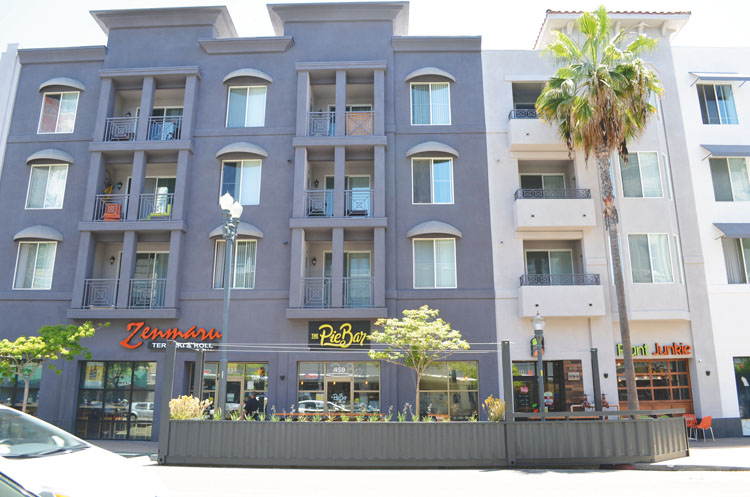The Long Beach City Council has approved a plan to streamline permits for the creation of sidewalk dining and parklets within the city’s right-of-way.
As defined by the Long Beach Public Works Department, a parklet “re-purposes parking space(s) or portions of a street into neighborhood gathering spaces.” A growing trend throughout the city, parklets extend pedestrian zones, often at the request of businesses, to provide space for activities such as sidewalk dining. They are also implemented as a traffic calming measure. The first parklet in Long Beach was installed at Lola’s Mexican Cuisine in 2011 on 4th Street in the Retro Row area, public works reported. This year, Groundwork Fitness opened the first fitness parklet in the United States at 333 Pine Ave. downtown.

On the recommendation of Long Beach Public Works, the city attorney has been tasked with preparing an ordinance to amend Long Beach Municipal Code Chapter 14.14, which governs the process for the design, permitting and development of areas within the public right-of-way for dining and other purposes. At the November 13 city council meeting, Director of Public Works Craig Beck said this ordinance would make the permitting process for sidewalk dining and parklets more user-friendly and save applicants money.
In his report on the new parklet ordinance, Beck wrote that city staff worked in collaboration with Long Beach business improvement districts (BIDs) to review and refine the current program. “The major focus was shortening the time for review and approval and ensuring projects met certain standards for safety and design,” the report stated.
The changes recommended in the report define and clarify permissible uses for public property. Also included in the report was a new handbook for permit applicants that serves as a comprehensive guide on how to add sidewalk dining or a parklet to an existing business.
The handbook details both mandatory rules and non-mandatory guidelines that establish “a framework of design and development standards” for parklets and outdoor dining in the City of Long Beach. In the case of projects that do not meet the guidelines, applicants are encouraged to propose alternatives that meet the spirit of the design guidelines.
Currently permitted parklet uses include dining, planting, bicycle parking and art. Under the proposed ordinance, additional uses and activities may be considered but will require city council approval. To minimize parking impacts, parklets will require a letter of support from its BID or community association and the number of parklets in a given area will be capped at 20%.
According to the public works report, the current process for applying for a permit takes a minimum of six months and requires several steps, including both city council action and the involvement of the city manager. The new process would delegate permit approval to the director of public works, reducing both processing time and cost.
At the city council meeting, Beck said the current fee associated with parklets is approximately $4,800. He estimated that the streamlined process could cut that figure in half.
How permits are renewed would also be updated. Currently, permits are issued on an annual basis and, upon expiration, require applicants to obtain either a new permit or a renewal permit. Under the new ordinance, permits will continue to be issued on an annual basis but a full resubmission process would not be required for renewals. The new ordinance would require a site inspection as part of the approval process. Modifications to an existing permit would still require a new permit submission.
The motion to approve the recommendations of Craig Beck and his department was carried by all nine councilmembers. “This was a policy many, many years in the making,” 1st District Councilmember Lena Gonzalez said at the meeting.
